Human Orbital Spaceflights
![]()
International Flight No. 263STS-125Atlantis (30)126th Space Shuttle missionUSA |
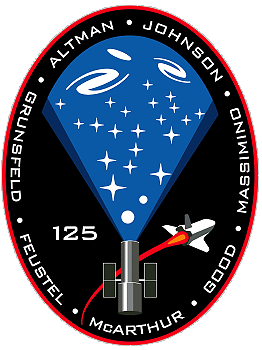 |
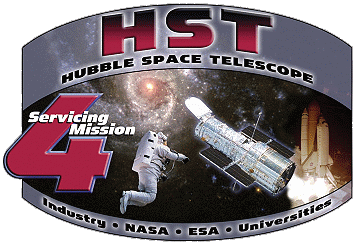 |
![]()
Launch, orbit and landing data
walkout photo |
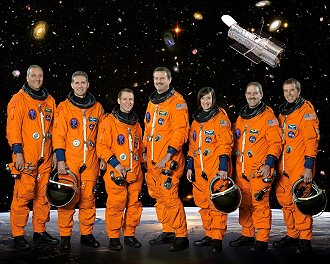 |
|||||||||||||||||||||||||||||
alternative crew photo |
alternative crew photo |
|||||||||||||||||||||||||||||
alternative crew photo |
alternative crew photo |
|||||||||||||||||||||||||||||
alternative crew photo |
||||||||||||||||||||||||||||||
Crew
| No. | Surname | Given names | Position | Flight No. | Duration | Orbits | |
| 1 | Altman | Scott Douglas "Scooter" "Bear" | CDR | 4 | 12d 21h 37m 08s | 197 | |
| 2 | Johnson | Gregory Carl "Ray J" | PLT | 1 | 12d 21h 37m 08s | 197 | |
| 3 | Good | Michael Timothy "Bueno" | MS-1, EV-4 | 1 | 12d 21h 37m 08s | 197 | |
| 4 | McArthur | Katherine Megan | MS-2, IV-1, FE, RMS | 1 | 12d 21h 37m 08s | 197 | |
| 5 | Grunsfeld | John Mace | MS-3, EV-1 | 5 | 12d 21h 37m 08s | 197 | |
| 6 | Massimino | Michael James | MS-4, EV-2 | 2 | 12d 21h 37m 08s | 197 | |
| 7 | Feustel | Andrew Jay "Drew" | MS-5, EV-3 | 1 | 12d 21h 37m 08s | 197 |
Crew seating arrangement
|
 |
|
||||||||||||||||||||||||||||||||
Hardware
| Orbiter : | OV-104 (30.) |
| SSME (1 / 2 / 3): | 2059-2 (3.) / 2044-2 (11.) / 2057-2 (4.) |
| SRB: | BI-137 / RSRM 105 |
| ET: | ET-130 (SLWT-34) |
| OMS Pod: | Left Pod 04 (30.) / Right Pod 01 (37.) |
| FWD RCS Pod: | FRC 4 (30.) |
| RMS: | 301 (27.) |
| EMU: | EMU No. 3008 (PLSS No. 1008) / EMU No. 3004 (PLSS No. 1004) / EMU No. 3015 (PLSS No. 1015) / EMU No. 3017 (PLSS No. 1017) |
Flight
|
Launch from Cape Canaveral (KSC);
HST-SM-04; landing on the Edwards
AFB, Runway
22. On August 22, 2008, after a delay following Tropical Storm Fay, Atlantis was rolled from the Orbiter Processing Facility to the Vehicle Assembly Building, where it was mated to the external fuel tank and solid rocket booster stack. Problems were encountered during the mating process, and poor weather due to Hurricane Hanna caused a delay in the rollout of Atlantis to the launch pad, which is normally done seven days after rollover. STS-125 was further pushed back to October 2008 due to manufacturing delays on external tanks for future space shuttle missions. Lockheed Martin experienced delays during the production changes to make new external tanks with all the enhancements recommended by the Columbia Accident Investigation Board, making it impossible for them to produce two tanks for the STS-125 mission-one for Atlantis, and one for Endeavour for an emergency rescue mission, if necessary - in time for the original August launch date. The first rollout to Launch Pad 39-A occurred on September 04, 2008. On September 27, 2008, the Science Instrument Command and Data Handling (SIC&DH) Unit on the Hubble Space Telescope failed. Because of its importance to the telescope, NASA postponed the launch of STS-125 on September 29, 2008 until 2009 so the failed unit could be replaced as well. Atlantis was rolled back to the Vehicle Assembly Building on October 20, 2008. STS-125 (HST-SM-04) was the fifth and final space shuttle servicing mission to the Hubble Space Telescope (HST). Atlantis carried two new instruments to the Hubble Space Telescope, the Cosmic Origins Spectrograph and the Wide Field Camera 3. The mission also replaced a Fine Guidance Sensor, six gyroscopes, and two battery unit modules to allow the telescope to continue to function at least through 2014. The crew also installed new thermal blanket insulating panels to provide improved thermal protection, and a soft-capture mechanism that would aid in the safe de-orbiting of the telescope by an unmanned spacecraft at the end of its operational lifespan. The mission also carried an IMAX camera and the crew documented the progress of the mission for an upcoming IMAX movie. Servicing Mission 1, December 1993: The primary goal of Servicing Mission 1 was to restore Hubble's vision. Because Hubble's primary mirror was incorrectly shaped, the telescope could not focus all the light from an object to a single sharp point. Instead, it saw a fuzzy halo around objects it observed. Astronauts on space shuttle Endeavour's STS-61 mission spent five days tuning it up. They installed two new devices - the Wide Field and Planetary Camera 2 and the Corrective Optics Space Telescope Axial Replacement - to compensate for the primary mirror's incorrect shape. Astronauts also installed new solar arrays, to reduce the jitter caused by excessive flexing of the solar panels during the telescope's orbital transition from cold darkness into warm daylight, and new gyroscopes to help point and track the telescope, along with fuse plugs and electronic units. Servicing Mission 2, February 1997: During the 10-day mission (STS-82), astronauts aboard the space shuttle Discovery installed two technologically advanced instruments. The Near Infrared Camera and Multi-Object Spectrometer (NICMOS) enabled Hubble to observe infrared wavelengths, crucial for viewing very distant optical sources that have lost energy traveling across most of the visible universe and now radiate in the infrared band. The second instrument, the Space Telescope Imaging Spectrograph (STIS), could take detailed pictures of celestial objects and hunt for black holes. Both instruments featured technology that wasn't available when scientists designed and built the original Hubble instruments in the late 1970s. Astronauts also installed a refurbished Fine Guidance Sensor, one of three essential instruments used to keep Hubble steady while viewing objects and to calculate celestial distances; a Solid State Recorder to replace one of Hubble's data recorders; and a refurbished, spare Reaction Wheel Assembly, part of the Pointing Control Subsystem. Servicing Mission 3A, December 1999: NASA decided to split the third servicing mission into two parts, SM3A and SM3B, after the third of Hubble's six gyroscopes failed. Hubble normally needs three gyroscopes to observe a target. Astronauts aboard space shuttle Discovery (STS-103) replaced all six gyroscopes, as well as one of Hubble's three fine guidance sensors that are used to keep Hubble steady while viewing objects. The astronauts also installed a transmitter, an advanced central computer, a digital data recorder, an electronics enhancement kit, battery improvement kits and new outer layers of thermal protection. Shortly before the 3A mission, Hubble was placed into "safe-mode" after a fourth gyroscope failed unexpectedly. In safe-mode Hubble is in a sort of protective hibernation and cannot observe objects. Servicing Mission 3B, March 2002: Astronauts aboard space shuttle Columbia (STS-109) installed several new instruments on Hubble that vastly improved the observatory's capability. Astronauts performed five spacewalks. Their principal task was to install the Advanced Camera for Surveys (ACS). With its wide field of view, sharp image quality and enhanced sensitivity, ACS could collect data 10 times faster than the Wide Field and Planetary Camera 2, the telescope's earlier surveying instrument. The ACS brought the then 12-year-old telescope into the 21st century. The ACS was quickly used to capture the most distant image of the universe, called the Hubble Ultra Deep Field. The 8-year-old solar array panels were replaced with smaller rigid ones that produce 30 percent more power. Astronauts also replaced the outdated Power Control Unit, which distributes electricity from the solar arrays and batteries to other parts of the telescope; and they replaced one of the four reaction wheel assemblies that make up Hubble's pointing control system. Another key upgrade was the installation of a new cooling system for the Near Infrared Camera and Multi-Object Spectrometer (NICMOS), down since 1999 after depleting its refrigerant. Hubble's infrared vision was restored. Almost immediately after launch and during the ascent, flight systems reported problems with a hydrogen tank transducer and a circuit breaker; the crew was immediately advised to disregard the resultant alarms and continue to orbit. Following the morning wake up call, the crew set right to work on the day's tasks, which were centered on inspection of the orbiter's heat shield. Using the shuttle robotic arm and the Orbiter Boom Sensor System (OBSS), the crew went through a detailed inspection of the orbiter's thermal protection system (TPS) tile and Reinforced carbon-carbon (RCC) surfaces. During the inspection, engineers on the ground noticed a small area of tile on the forward area of the shuttle's right wing that appeared to have suffered some damage during ascent. Mission managers called up to the crew to alert them of the find, advising Scott Altman that one of the orbiter's wing leading edge sensors recorded a debris event during ascent, around 104 – 106 seconds following liftoff, which may have been the cause of the damage seen in that area. CAPCOM Daniel Burbank advised the crew that the damage did not initially appear to be serious, but assured the crew that the image analysis team would be reviewing the imagery further, and engineers on the ground would be analyzing it to determine if a focused inspection would be required. The rendezvous of space shuttle Atlantis with the Hubble Space Telescope actually began with the precisely timed liftoff. After liftoff and during the first two days of the mission, periodic firings of the shuttle's Reaction Control System thrusters and Orbital Maneuvering System engines gradually increased and aligned Atlantis' orbit with that of the telescope, approximately 350 statute miles (563 km) above the Earth. Before the approach, the Space Telescope Operations Control Center at the Goddard Space Flight Center in Greenbelt, commanded the telescope to stow the two High Gain Antennas and close the aperture door to protect its sensitive equipment and mirror. About 2 ½ hours before Hubble was captured by the shuttle's robotic arm, Atlantis drifted to a point nearly 50,000 feet (9 ½ statute miles = 15.3 km) behind the telescope, the starting point from which the final approach to the observatory began. At that point, the crew could oversee a precisely-targeted thruster firing called the Terminal Initiation, or TI burn, that set the stage for the final phase of the rendezvous. Atlantis closed the final miles to the telescope during the next orbit of Earth. During that time the shuttle's rendezvous radar system began tracking Hubble by measuring the distance and rate of closure. During the final approach, the shuttle had an opportunity to conduct four small mid-course corrections. Simultaneously, Mission Specialist Megan McArthur maneuvered the robotic arm above the payload bay of Atlantis to a position poised to grapple a capture fixture on the telescope. After the fourth and final mid-course correction burn, the shuttle was about a half-mile (900 meters) below the telescope. At that point, about an hour before the scheduled docking, Commander Scott Altman moved from his forward seat on the flight deck to the aft flight control station overlooking the payload bay. Looking out of two overhead windows, Scott Altman, assisted by pilot Gregory C. Johnson and Mission Specialist Michael Good, took over manual control of the approach. Michael Good operated a handheld laser range-finding device, aiming it through the shuttle windows at the telescope to provide Scott Altman with supplementary distance and closing rate information. Mission Specialist Andrew Feustel monitored a laptop computer program displaying real-time navigation information, which provided Scott Altman with additional cues to aid in controlling his approach. Scott Altman slowed Atlantis' approach and flew up toward the telescope, switching the Reaction Control System to a mode known as "low-Z" at a distance of about 1,500 feet (457.2 meters). In that mode, jets offset to the direction of the telescope were fired to continually slow the shuttle's approach, while avoiding any chance of contaminating Hubble with shuttle thruster exhaust, a phenomenon known as "pluming". As Atlantis moved within 600 feet 182.9 meters), its approach was slowed to less than a half-mile per hour. As the distance decreased to about 200 feet (61 meters), Hubble's ground controllers sent commands to perform a final roll maneuver to position it for capture. The telescope's solar arrays remained parallel to Hubble's optical axis. The shuttle coasted toward the observatory as it closed the final 100 feet (30.5 meters), moving at a speed of only a tenth of a foot per second (3 centimeters per second). Scott Altman flew Atlantis to within 35 feet (10.7 meters) of the telescope and hold position, while Megan McArthur, using a view from a camera mounted at the end of the robotic arm to assess alignment, latched on to the telescope with the robotic arm end effector. Megan McArthur successfully grappled Hubble at 17:14 UTC, and at 18:12 UTC the telescope was safely berthed in the payload bay of Atlantis. Using views from a camera centered in a structure where the telescope was berthed, Megan McArthur then lowered Hubble into a special cradle, called the Flight Support System, or FSS, in Atlantis's payload bay. The telescope was latched to the high-tech, lazy Susan-type device for the duration of the servicing work. An umbilical adjacent to the rotating FSS was remotely connected to provide electrical power from Atlantis to the telescope. Then, Scott Altman positioned the shuttle to allow Hubble's solar arrays to gather energy from the sun to fully charge the telescope's batteries. During the five servicing spacewalks, the telescope's support structure could be rotated and pivoted as needed to provide the best available access to various worksites. Later in the day, John Grunsfeld and Andrew Feustel, along with Michael Good and Michael Massimino worked on preparing for the next day's spacewalk, gathering tools and checking out the suits and equipment that would be used during the EVA. The first EVA was performed by John Grunsfeld and Andrew Feustel on May 14, 2009 (7h 20m) to replace a wide field camera. They also swapped out three batteries and installed a mechanism for a spacecraft to capture for de-orbit at the end of the telescope's life. Andrew Feustel began the first spacewalk of the STS-125 mission by making his way to Wide-field Scientific Instrument Protective Enclosure, in which the telescope's new equipment was launched, and released some latches. Meanwhile John Grunsfeld set up the foot restraint Andrew Feustel (and later in the mission, Michael Good) used on the shuttle's robotic arm and installed the berthing and positioning system post, which protected the telescope's solar arrays from vibration while the spacewalkers are working. He also installed a fixture in the cargo bay that was used to temporarily hold equipment after it was removed. Andrew Feustel then installed a handle on the foot restraint, before climbing on. Inside the shuttle, Megan McArthur then maneuvered him into position for the removal of the Wide Field Planetary Camera 2, or WFPC 2. They replaced it with a new wide-field camera that allows the telescope to take large-scale, clear and detailed photos over a wide range of colors. John Grunsfeld took advantage of the time it took Andrew Feustel to get into place by installing a protective cover on Hubble's low-gain antenna. Once that was done, he joined Andrew Feustel at the WFPC 2. To remove the camera, Andrew Feustel simply released a blind-mate connector, a grounding strap and a latch, and allowed the camera to slide out on some guide rails, while John Grunsfeld monitored the camera's clearance. The camera was temporarily stored on the fixture John Grunsfeld deployed, while the astronauts moved on to the installation of the new Wide Field Camera 3. Andrew Feustel again was doing the heavy lifting with the help of the shuttle's robotic arm. He and John Grunsfeld installed a handle on the new WFC 3 where it was stowed inside the Wide-field Scientific Instrument Protective Enclosure, and then Andrew Feustel carefully removed it while John Grunsfeld monitored clearances. Before the camera could be removed, Andrew Feustel needed to release two vent valves, a ground strap and a latch. Andrew Feustel carried the new camera to the former location of the old camera on the telescope, and slided it into place. He secured it with a latch, a blind-mate interface and a ground strap that John Grunsfeld installed on the telescope. Afterward, Andrew Feustel removed the handle from the camera and handed it off to John Grunsfeld for storage, and then permanently stowed the WFPC 2 inside the Wide-field Scientific Instrument Protective Enclosure. The spacewalkers' next major task was the replacement of the Science Instrument Command and Data Handling Unit. The computer sends commands to Hubble's science instruments and formats science data for transmission to the ground. The computer was carried to the telescope inside a multi-use lightweight equipment carrier in the shuttle's cargo bay. John Grunsfeld removed the new computer from the carrier by releasing eight bolts, while Andrew Feustel removed the old computer from the telescope by releasing 10 bolts. Andrew Feustel carried the old computer to John Grunsfeld at the carrier, where the two swapped. Andrew Feustel then carried the new computer back to the telescope and installed it, while John Grunsfeld stored the old one inside the carrier. Their final scheduled task for the day was to install three latch-over-center kits that allows for faster opening and closing of the telescope doors during the third spacewalk. The second EVA by Michael Massimino and Michael Good occurred on May 15, 2009 (7h 56m) to change out three boxes, each containing two of the telescope's six gyroscopes, and three batteries. For their first spacewalk of the STS-125 mission, Michael Massimino and Michael Good spent the bulk of their time replacing three rate sensor units. Each unit is part of a rate gyro assembly, which sense vehicle motion and provide rate data for the telescope. The replacement units were stored inside a protective enclosure inside the shuttle's cargo bay. Michael Massimino opened the lid of the enclosure to allow Michael Good, who was riding the space shuttle's robotic arm for the spacewalk, to retrieve the first unit and carry it to the telescope. Michael Massimino also retrieved a gripper tool that Michael Good used to maneuver the units into place. At the telescope, Michael Good retracted two fixed head star tracker seals, allowing the doors on the telescope bay that the crew was working in to open. Once open, Michael Good moved a cross aft shroud harness inside the telescope to make room for the foot restraint Michael Massimino was using. Michael Massimino retrieved the foot restraint for Michael Good to install, then Michael Good helped Michael Massimino into it. To remove the old rate sensor units, Michael Massimino disconnected two electrical connectors, while Michael Good removed three bolts. The same connectors and bolts needed to be connected and tightened to install the replacement unit. The two spacewalkers repeated this process two more times as they replaced the remaining two rate sensor units. After the new rate sensor units were installed, Michael Massimino and Michael Good performed the first half of the mission's battery replacement work. They were working in the telescope's Bay 2 to replace the first of three batteries. Michael Good retrieved the old battery by disconnecting six electrical connectors and unscrewing 14 bolts, while Michael Massimino retrieved the new battery from its stowage location inside the shuttle's super lightweight interchangeable carrier. He had to unscrew 12 bolts to remove it. The two astronauts swapped batteries at the carrier, and Michael Good transported the new battery to the telescope for installation, while Michael Massimino stowed the old. The third EVA was again performed by John Grunsfeld and Andrew Feustel on May 16, 2009 (6h 36m) to install the Cosmic Origins Spectrograph, a device that will perform spectroscopy, the science of breaking up light into its individual components. The astronauts also conducted repairs to the Advanced Camera for Surveys, which has experienced power failures, causing two of the telescope's three observing channels to stop operating. John Grunsfeld and Andrew Feustel were back outside for the third spacewalk of the mission, this time focusing on the installation of the telescope's new Cosmic Origins Spectrograph, and the first part of the advanced camera for survey repair work. John Grunsfeld began by preparing a temporary storage fixture in the shuttle's cargo bay, while Andrew Feustel opened the doors of the telescope bay he and John Grunsfeld were working in. Once everything was ready, John Grunsfeld got the Corrective Optics Space Telescope Axial Replacement - or COSTAR - ready for removal by unhooking four connectors, disconnecting one ground strap and unscrewing two latches. Andrew Feustel, again on the shuttle's robotic arm, removed the equipment and attached it to the temporary storage fixture John Grunsfeld prepared. Both crew members then moved to the protective enclosure that the new Cosmic Origins Spectrograph was launched in and work together to remove it. They needed to disconnect a ground strap, disengage locks and release latches before Andrew Feustel was able to remove the equipment from the carrier and made his way via robotic arm back to the telescope for its installation. Andrew Feustel maneuvered the equipment into place and engaged its two latches. John Grunsfeld then hooked up four connectors and a ground strap. Following that installation, the only thing left to do on the tasks was to store the COSTAR in the protective enclosure that previously housed the spectrograph. Once that was done, John Grunsfeld and Andrew Feustel began work on the Advanced Camera for Surveys repair, which was finished later in the mission. For this spacewalk, John Grunsfeld and Andrew Feustel spent about two hours working on the camera and removed two of the four electronics cards that need to be replaced. John Grunsfeld's first task was to install four guide studs that was used later to install tools. Andrew Feustel assisted him with that job, and then the two worked together to remove a grid. To do so, John Grunsfeld fitted a grid cutter over the grid. Tightening the 12 bolts on the grid cutter caused a blade to cut off the 12 legs of the grid. The grid cutter also trapped the pieces of the grid, so that the spacewalkers don't have to handle the sharp edges created by cutting the grid off. That gave them access to a cover plate, which was the next thing John Grunsfeld and Andrew Feustel needed to remove. This required John Grunsfeld to unscrew 32 fasteners. John Grunsfeld first loosened all the fasteners, and then, to ensure that none of those fasteners are lost, he installed a fastener capture plate over the cover plate before he released the fasteners. The fastener capture plate then was removed along with the cover plate. With that, John Grunsfeld finally was able to access the electronics cards. Andrew Feustel retrieved and handed to him a piece of equipment called a "wishbone" that was used to mount the tool that was used to extract the electronic cards from the camera. Andrew Feustel also retrieved that tool for John Grunsfeld, as well as the protective storage carrier that John Grunsfeld put each card into as it was removed. To actually remove the card, John Grunsfeld used a card extraction tool that had a jaw to grip the card, which John Grunsfeld tightened by tightening bolts, and an elevator block that removed the card when John Grunsfeld tightened a different bolt. The fourth EVA by Michael Massimino and Michael Good was conducted on May 17, 2009 (8h 02m) to repair and upgrade the Space Telescope Imaging Spectrograph, which stopped working in 2004 due to power failures, and install a stainless steel blanket on Hubble's exterior. The blankets provide additional thermal protection for some equipment bays, replacing the existing multi-layer insulation that has degraded over time. The bulk of Michael Massimino and Michael Good's second spacewalk was spent repairing the telescope's Space Telescope Imaging Spectrograph - a task that has been compared to brain surgery. To access the electronics card the spacewalkers intend to replace, they needed to remove a cover plate. However, there were several obstacles to doing so. First Michael Massimino needed to remove a clamp from the upper left corner of the cover plate. Then he needed to remove a handrail. Both of these tasks required special tools to catch the fasteners currently holding those pieces in place. The clamp removal tool fitted over the fasteners of the clamp and catches them as they were released; the handrail removal tool did the same over the fasteners of the handrail. The cover plate itself had 111 fasteners that needed to be unscrewed. To ensure that none of those small pieces float away, another fastener capture plate was installed. But to install the fastener capture plate, Michael Massimino first installed guide studs that were used to mount the plate onto the instrument. To install the guide studs, Michael Massimino had to release four fasteners without losing the fasteners or their bits. For that job, he used the retainer installation bit caddy, which used a retaining ring to go around the head of the fasteners and behind it to trap the washer. Then four fasteners could be removed with a fastener extraction bit, and their washers stayed in place to be removed by a washer extraction tool. That left a place for the guide studs to be installed, allowing for the installation of the fastener capture plate. Once it was in place, Michael Massimino was able to unscrew the remaining 107 fasteners and washers safely, and - after Michael Good had cut four wires - remove the cover plate. With it out of the way, Michael Massimino was able to finally access the electronics card that he and Michael Good replaced. To remove the old card, Michael Massimino used a card extraction tool, just as John Grunsfeld did during the third spacewalk. He then stored it in a transport case, detached the extraction tool and used the tool to unpack and install the new card. He also installed the new card's simpler cover, which only required him to engage two locking pins. Once the new card was installed, Michael Massimino and Michael Good wrapped up their last spacewalk by installing one of two new protective thermal insulation panels - called New Outer Layer Blankets - delivered by space shuttle Atlantis. This insulation was installed on the telescope's bay 8 door, and Michael Good started the work by first removing the existing insulation in that area, including a temporary patch installed during the second Hubble servicing mission. This task involved removing seven clips and unhooking a wire loop holding the patch in place, and cutting two ground wires to release the original insulation. The new insulation was installed using four latches and pressure-activated adhesive that Michael Good activated by pressing a roller tool against its surface. The fifth and final EVA by John Grunsfeld and Andrew Feustel was performed on May 18, 2009 (7h 02m) to replace a sensor needed for pointing the telescope and install another blanket on Hubble's exterior. For the final spacewalk of the mission, John Grunsfeld and Andrew Feustel were finishing both the battery replacement and New Outer Layer Blanket installation tasks, following the same procedures as those of the work on the second and fourth spacewalks. Between those two jobs, however, they also were replacing the telescope's fine guidance sensor. To remove the old sensor, John Grunsfeld and Andrew Feustel worked together to unhook nine connectors. Then John Grunsfeld - who was riding the shuttle's robotic arm for this spacewalk - released one latched and installed a handle on the equipment that he used to carefully lift the sensor out of the telescope. He carried it to a protective enclosure inside the shuttle's cargo bay, where Andrew Feustel was waiting to assist him in storing it and removing the new sensor. John Grunsfeld carried the new sensor back to the worksite, slided it into place and engaged its one latch. Then he worked with Andrew Feustel to hook up its nine connectors. On the day before Hubble's deployment, controllers at Goddard Space Flight Center, sent commands to unfurl the telescope's high-gain antennas and conduct a final checkout of telemetry with the telescope's control center. About three hours before the planned release time, Megan McArthur powered up Atlantis' robotic arm and latched on to the telescope's grapple fixture. Scott Altman maneuvered Atlantis to the correct orientation to release the observatory. The telescope was switched back to its internal power, its aperture door was commanded open to allow starlight to fall upon its optical instruments, and the connection to Atlantis's power system was remotely disconnected. Three latches securing Hubble to its support structure were opened. After a poll of shuttle and telescope flight controllers, Megan McArthur unberthed Hubble and maneuvered it to a point high above the shuttle bay. Atlantis' steering jets were turned off to avoid any possible disturbance as Megan McArthur commanded the arm to release the telescope's grapple fixture. About a minute later, the shuttle thrusters fired in the Low-Z mode to slowly back Atlantis away. Another jet firing was performed about a half-hour later to increase Atlantis' separation rate from the telescope, as the seven crew members bid farewell to Hubble for the final time. The landing was delayed two days due of bad weather in Florida. STS-125 was the only planned shuttle mission after the Columbia accident to be launched into a low-inclination orbit that did not allow rendezvous with the International Space Station. Due to the inclination and other orbit parameters of Hubble, Atlantis would have been unable to use the International Space Station as a safe haven in the event of structural or mechanical failure. To preserve NASA's post Columbia requirement of having shuttle Launch On Need (LON) rescue capability, STS-400 was the flight designation given to the Contingency Shuttle Crew Support (CSCS) mission which would have been flown by Endeavour in the event Atlantis became disabled during STS-125. After Atlantis performed the late inspection and was cleared for re-entry, Endeavour was officially released from stand-by status on Thursday, May 21, 2009. |
EVA data
| Name | Start | End | Duration | Mission | Airlock | Suit | |
| EVA | Grunsfeld, John | 14.05.2009, 12:52 UTC | 14.05.2009, 20:12 UTC | 7h 20m | STS-125 | Atlantis | EMU No. 3008 |
| EVA | Feustel, Andrew | 14.05.2009, 12:52 UTC | 14.05.2009, 20:12 UTC | 7h 20m | STS-125 | Atlantis | EMU No. 3004 |
| EVA | Massimino, Michael | 15.05.2009, 12:49 UTC | 15.05.2009, 20:45 UTC | 7h 56m | STS-125 | Atlantis | EMU No. 3015 |
| EVA | Good, Michael | 15.05.2009, 12:49 UTC | 15.05.2009, 20:45 UTC | 7h 56m | STS-125 | Atlantis | EMU No. 3017 |
| EVA | Grunsfeld, John | 16.05.2009, 13:35 UTC | 16.05.2009, 20:11 UTC | 6h 36m | STS-125 | Atlantis | EMU No. 3008 |
| EVA | Feustel, Andrew | 16.05.2009, 13:35 UTC | 16.05.2009, 20:11 UTC | 6h 36m | STS-125 | Atlantis | EMU No. 3004 |
| EVA | Good, Michael | 17.05.2009, 13:45 UTC | 17.05.2009, 21:47 UTC | 8h 02m | STS-125 | Atlantis | EMU No. 3017 |
| EVA | Massimino, Michael | 17.05.2009, 13:45 UTC | 17.05.2009, 21:47 UTC | 8h 02m | STS-125 | Atlantis | EMU No. 3015 |
| EVA | Feustel, Andrew | 18.05.2009, 12:20 UTC | 18.05.2009, 19:22 UTC | 7h 02m | STS-125 | Atlantis | EMU No. 3004 |
| EVA | Grunsfeld, John | 18.05.2009, 12:20 UTC | 18.05.2009, 19:22 UTC | 7h 02m | STS-125 | Atlantis | EMU No. 3008 |
Photos / Graphics
 |
 |
 |
 |
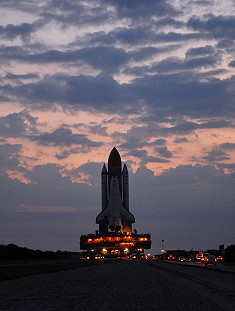 |
 |
 |
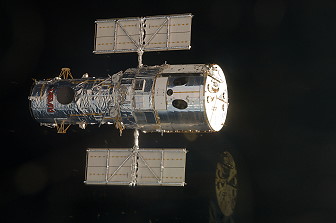 |
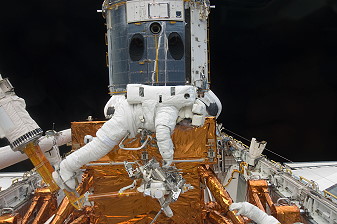 |
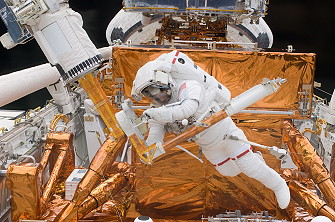 |
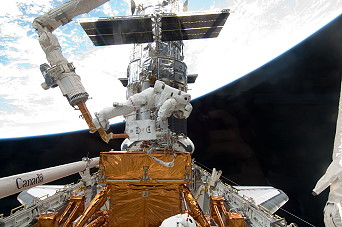 |
 |
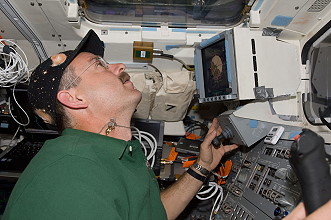 |
 |
 |
 |
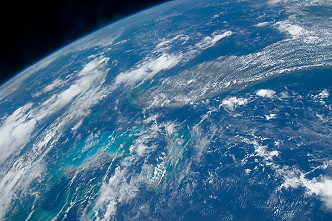 |
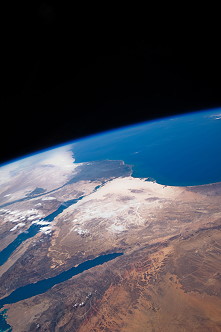 |
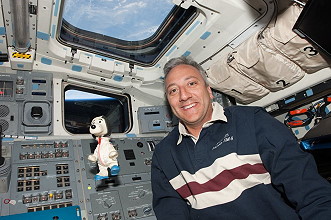 |
 |
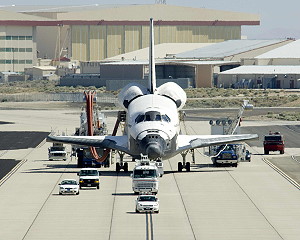 |
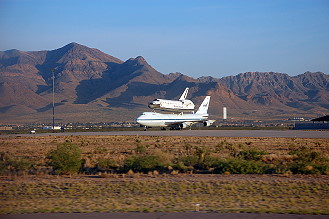 |
more EVA photos |
|
| © |  |
Last update on March 27, 2020.  |
 |